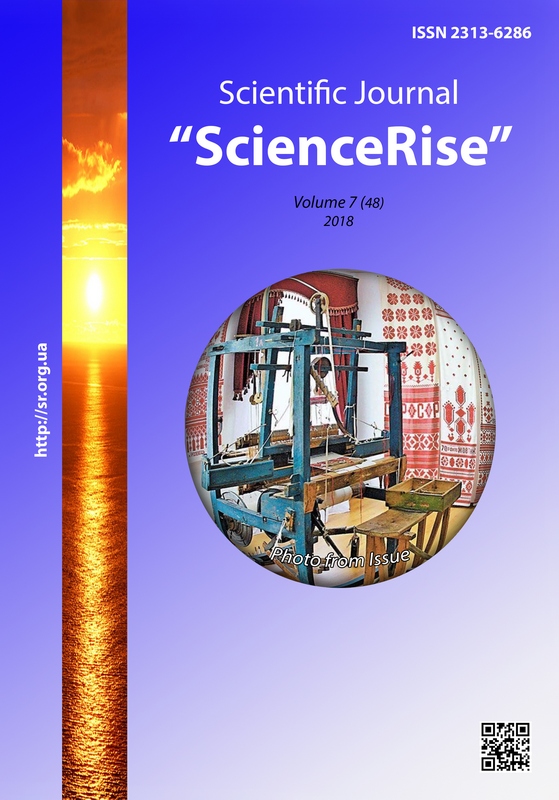Development of the complex bakery improver "Fresh KSB +" for the freshnes extension of bakery products
DOI:
https://doi.org/10.15587/2313-8416.2018.140256Keywords:
complex bakery improver, dry whey protein concentrate "KSB-UF-65", bakery products, stalingAbstract
The article considers the development of a complex bakery improver "KSB Freshness +", which includes whey protein dry concentrate "KSB-UV-65" as a functional basis. Active part is the enzyme Novamyl 1500 MG, dry wheat gluten, apple pectin, maltodextrin, lecithin, ascorbic acid. The optimal dosage of a complex bakery improver "Freshness KSB +" was set at 1.5% to the weight of flour, which allows to extend the freshness of unpackaged bakery products to 72 hours
References
Gulich, M. P. (2011). Ratsional'ne kharchuvannya ta zdoroviy sposib zhittya – osnovni chinniki zberezhennya zdorov’ya naselennya. Problemy stareniya i dolgoletiya, 20 (2), 128–132.
Pashhenko, L. P., Zharkova, I. M. (2014). Tekhnologiya khlebopekarnogo proizvodstva. Saint Petersburg: Lan, 372.
Kilkast, D., Subramaniam, P., Bazarnova, Yu. (Eds.) (2012). Stabil'nost' i srok godnosti. Khlebobulochnye i konditerskie izdeliya. Saint Petersburg: ID «Professiya», 444.
Lazovenko, I. A., Stenycheva, N. V. (2015). Ispol'zovanie fermentnykh preparatov v sostave kompleksnogo khlebopekarskogo uluchshitelya dlya sokhraneniya svezhesti khleba. Trudy BGTU. Khimiya, tekhnologiya organicheskikh veshhestv i biotekhnologiya, 4, 198–201.
Zyuz'ko, A. S., Korostova, E. V., Bondarenko, V. I. (2011). Razrabotka kompleksnogo uluchshitelya dlya povysheniya kachestva khleba iz pshenichnoy muki. Izvestiya vuzov. Pishhevaya tekhnologiya, 4, 24–25.
Bilyk, O., Drobot, V., Bondarenko, Y., Halikova, E. (2017). Research into efficiency of using the complex baking improver “Svizhist” in order to prolong freshness of bran crispbreads. Eastern-European Journal of Enterprise Technologies, 3 (11 (87)), 4–10. doi: http://doi.org/10.15587/1729-4061.2017.103860
Korshenko, L. (2014). Stabilization of wheat bread’s quality with low baking properties. On-Line Journal “Naukovedenie”, 6 (6). doi: http://doi.org/10.15862/115tvn614
Anderson, K. (2011). Low protein, high dockage and FM, low wheat price. Southwest Farm Press. Available at: https://www.southwestfarmpress.com/grains/low-protein-high-dockage-and-fm-low-wheat-price
Bilyk, O. A., Vasylchenko, T. O., Bandura, O. (2017). Kontsentrat syrovatkovyi bilkovyi sukhyi u tekhnolohii khlibobulochnykh vyrobiv dlia liudei litnoho viku. Khranenye y pererabotka zerna, 4 (212), 66–70.
Drobot, V. I., Bilyk, O. A., Savchuk, N. I., Bondarenko, Yu. V. (2017). Kharchovi dobavky ta tsukrysti rechovyny v tekhnolohii khlibobulochnykh vyrobiv. Kyiv: Vydavnytstvo, 253.
Imesin, A. (Ed.) (2010). Food Stabilisers, Thickeners and Gelling Agents. Oxford: Wiley-Blackweel, 368.
Sylchuk, T. A., Drobot, V. I., Bondarenko, Yu. V. (2012). Doslidzhennia vplyvu dobavok na protses cherstvinnia khliba. Kharchova nauka i tekhnolohiia, 1, 56–58.
BeMiller, J., Whistler, R. (Eds.) (2009). Starch: chemistry and technology. Burlington: Academic press, 894.
Teplov, V. I. (Ed.) (2008). Funktsional'nye produkty pitaniya. Moscow: A-Prior, 240.
Bobyshev, K. A., Matveeva, I. V., Yudina, T. A. (2013). Vliyanie askorbinovoy kisloty na svoystva testa i kachestvo khleba. Pishhevye ingredienty. Syr'e i dobavki, 1, 52–55.
Lebedenko, T. Ye., Pshenyshniuk, H. F., Sokolova, N. Yu. (2014). Tekhnolohiia khlibopekarskoho vyrobnytstva. Praktykum. Odessa: Osvita Ukrainy, 392.
Drobot, V. I. (2015). Tekhnokhimichnyi kontrol syrovyny ta khlibobulochnykh i makaronnykh vyrobiv. Kyiv: Kondor-Vydavnytstvo, 958.
Downloads
Published
Issue
Section
License
Copyright (c) 2018 Tetyana Vasylchenko, Olena Bilyk, Yulia Bondarenko, Аnna Hryshchenko

This work is licensed under a Creative Commons Attribution 4.0 International License.
Our journal abides by the Creative Commons CC BY copyright rights and permissions for open access journals.
Authors, who are published in this journal, agree to the following conditions:
1. The authors reserve the right to authorship of the work and pass the first publication right of this work to the journal under the terms of a Creative Commons CC BY, which allows others to freely distribute the published research with the obligatory reference to the authors of the original work and the first publication of the work in this journal.
2. The authors have the right to conclude separate supplement agreements that relate to non-exclusive work distribution in the form in which it has been published by the journal (for example, to upload the work to the online storage of the journal or publish it as part of a monograph), provided that the reference to the first publication of the work in this journal is included.

